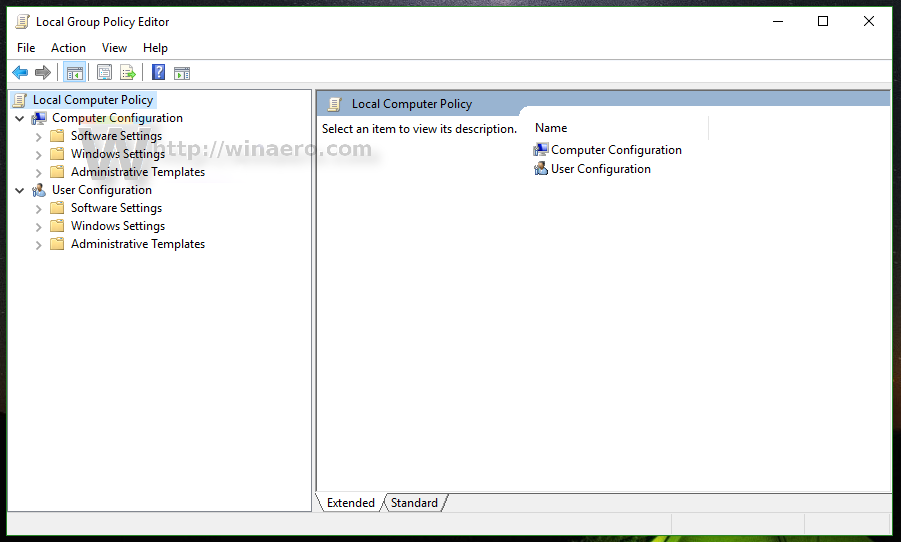
To Force Update Group Policy Settings in Windows 10 Manually. Open an elevated command prompt. To force apply only the changed policies, type or copy-paste the following command: gpupdate; To force update all policies, run the command: gpupdate /force; The commands above will update both User Group Policies and Computer Group Policies. Gpupdate command is used to update Group policies in Windows operating system Domain. There are different options to use with the gpupdate but one of the most used option is /force which will reapply all policy settings. Even “gpupdate” command provides very basic features we may need to get some help about the options.
The gpupdate command refreshes a computer's local Group Policy, and any Active Directory-based group policies.
Availability
Gpupdate is an external command and is available for the following Microsoft operating systems as gpupdate.exe.
Gpupdate syntax
| /Target:{Computer | User} | Specifies that only user or only computer policy settings be refreshed. By default, both user and computer policy settings are refreshed. |
| /Force | Reapplies all policy settings. By default, only policy settings that have changed are applied. |
| /Wait:{value} | Sets the number of seconds to wait for policy processing to finish. The default is 600 seconds. The value '0' means not to wait. The value '-1' means to wait indefinitely. When the time limit is exceeded, the command prompt returns, but policy processing continues. |
| /Logoff | Causes a logoff after the Group Policy settings are refreshed, which is required for those client-side extensions that don't process policy on a background refresh cycle but do during log on. Examples include user-targeted Software Installation and Folder Redirection. This option has no effect if there are no extensions called that require a logoff. |
| /Boot | Causes a reboot after the Group Policy settings are refreshed, for those client-side extensions that don't process policy on a background refresh cycle but do at startup. Examples include computer-targeted Software Installation. This option has no effect if there are no extensions called that require a reboot. |
| /Sync | Causes the next foreground policy application to be done synchronously. Foreground policy applications occur at computer boot and user login. You can specify this for the user, computer or both using the /Target parameter. The /Force and /Wait parameters are ignored if specified. |
Gpupdate examples
Running the command alone refreshes the computers policies as shown below in the example output.
Additional information
- See our Active Directory definition for further information and related links on this term.

gpupdate command is used to update Group policies in Windows operating system Domain. There are different options to use with the gpupdate but one of the most used option is /force which will reapply all policy settings.
Get Help
Even “gpupdate” command provides very basic features we may need to get some help about the options. We can list help information by using /? option like below. This will list options and option explanation of the “gpupdate” command.
Force Only
We can force to reapply all group policy settings with the /force option. The default behavior of the /force option is only update changed policies.


As we can see from screenshot User and Computer policies are updated successfully.
Update Only User Policies
By default all policies will be updated with the “gpupdate” command. If we want to update only the policies related with the user objects wen need to specify the /Target:User options to the “gpupdate” command like below.
Update Only Computer Policies
Alternatively, we can only update computer object-related policies with the option /Target:Computer like below.
Force and Reboot
If we want to force and make the system restart or reboot we should provide the option /boot next to the option /force like below.
Force and Logoff Account
We can also log off from the current session or account after updating the group policy forcibly. We will provide the /logoff option after the option /force like below.
Set Timeout To Force gpupdate
Updating group policy may take some time or run forever if there is a problem. This problem can be a network or domain-related problem. Especially in remote branches network problems are very popular. We can set a time that will stop the update if it is not completed. We call this a timeout and use /w option and provide a time.
In this example, we will wait for 120 seconds in order to complete a group policy update.
Force gpupdate with PowerShell
Force Gpupdate Command
gpupdate command can be used in PowerShell too. We can use -force option like below with Invoke-GPUpdate command.